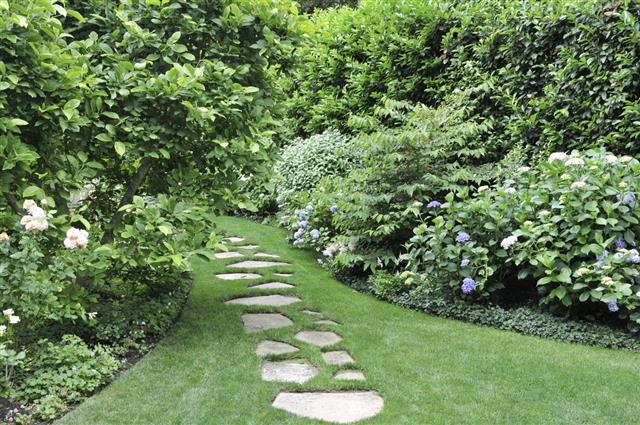
A cultivar of Zoysia, Emerald Zoysia is a shade and drought-resistant grass that has a fine texture. This write-up provides instructions for caring for this lawn grass.
Bermuda, Bluegrass, Bentgrass, Buffalo grass, Carpet grass, Centipede grass, Fescue grass, St. Augustine, Bahia, and Zoysia are some of the popular turf and lawn grasses that are used all over the world. Zoysia is a hardy turf grass which is widely used due to its fine wiry-blade texture, density, and beautiful emerald-green color. This genus comprises eight species of grasses that are native to some parts of Asia and Australasia. These are all widely used for the purpose of landscaping. These are used for golf courses, beautiful gardens, or lawns in commercial properties. Emerald Zoysia is one of the grass varieties that is extremely popular as it provides lush landscaping. It is shade and drought-resistant as well.
Characteristics
Zoysia is a warm season grass. Its growing season starts from the late spring till early summer. Zoysia ‘Emerald’ is one of the most popular lawn grasses, as it can survive in harsh weather conditions. It is a hybrid between Zoysia japonica and Zoysia tenuifolia. The fine texture of this grass is attributed to the latter, whereas its growth pattern and tolerance to cold is attributed to the former. Since it is drought-resistant, it will survive even if you don’t water it very frequently. The maximum height to which it can grow ranges from 6 to 12 inches. So, if you have this grass in your lawn, you wouldn’t have to worry about mowing your lawn very often. If you love oriental landscape design, then this is the grass variety that will give the dense carpet-like growth you want. Moreover, it is also resistant to many diseases. Due to its characteristics, it is favored by those who want lush-green lawns.
Caring for this Grass
The seeds or plugs for this grass variety are not easily available, and the seed germination process is very slow as well. Thus, it would be best to establish your lawn by laying the sod in an area that receives ample sunlight. You must not start the grass during the winter season. Though it will survive even in shade, you wouldn’t get the beautiful texture that you might be looking for. These grasses grow well in clay or loamy soil. Once you have laid the sod, water it daily in the initial few weeks, till it gets firmly rooted in the soil. After that, you can water it a couple of times every week. One of the important aspects of care is that it must never be over-fertilized. This could lead to the development of thatch, which in turn would damage this grass variety. It would be best to use fertilizers about three times in a year.
The best time for the first application is during spring. After that, the high nitrogen slow-release fertilizer could be applied after 8 weeks. Then, a winterizing fertilizer could be applied during the month of October. You must also aerate the lawn annually. This allows the nutrients and oxygen to penetrate into the soil. Soil can also soak water properly. Thus, the grass will be replenished with nutrients and water. Also, use a lawn mower every 7 – 10 days. Make sure that you don’t cut the grass below the height of two inches. If you do, you might not be able to get the perfect lush-green carpet-like appearance. Though this grass grows slowly, if you don’t mow the grass on time, you might observe thatch developing on your lawn. You must also take precautions during the winter season. Though this grass is dense and doesn’t allow weeds to grow, if you spot winter weeds, remove them quickly. The methods for weed control must be used in the month of October.
This grass can grow well with moderate lawn care, but if it gets damaged, it takes a long time to recover. So, follow these tips and provide all the ideal conditions needed for its growth. If you follow these instructions, you will get a beautiful lush-green lawn that you always wanted.







